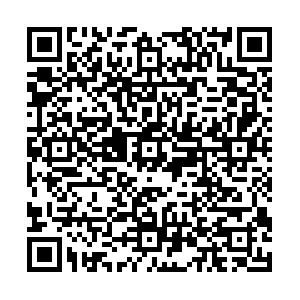Differences and related factors of preschool children's evaluation by parents and teachers using the Strengths and Difficulties Questionnaire
-
摘要:
目的 探讨家长与教师使用长处和困难问卷(SDQ)评价学龄前儿童心理健康的差异及影响因素,为促进儿童心理健康提供参考。 方法 回顾性分析深圳南山区2023年3—6月14 763名中、大班幼儿的SDQ调查数据。采用χ2检验分析父母与教师对幼儿心理健康问题评价差异性,采用多因素Logistic回归分析影响父母评价因素,采用Kappa系数检验父母与教师评价的一致性。 结果 父母评价的学龄前儿童心理卫生问题阳性率(7.2%)高于教师评价(6.2%)(χ2=254.27,P < 0.01)。性别差异中,父母评价男童的心理卫生问题阳性率(7.9%)低于教师(8.5%),而女童(6.4%)则高于教师评价(3.8%)(χ2值分别为163.59,81.26,P值均 < 0.01)。年龄差异中,父母评价的4,5,6岁学龄前儿童心理卫生问题阳性率(8.5%,7.4%,5.8%)均高于教师评价(6.3%,6.7%,5.4%)(χ2值分别为41.23,157.53,63.67,P值均 < 0.05)。父母评价的单因素分析显示,男童(7.9%)、4岁(8.5%)、母亲年龄20~35岁(6.6%)、母亲学历为高中及以下(9.8%)、父亲年龄23~40岁(6.4%)、父亲学历为高中及以下(10.3%)、接触二手烟的学龄前儿童心理卫生问题阳性率(7.9%)均较高(χ2=23.56~235.24,P值均 < 0.01)。多因素Logistic回归分析显示,母亲/父亲学历较低、幼儿接触二手烟均是SDQ父母评价异常的风险因素(OR值分别为2.05,1.62,3.15,P值均 < 0.05)。父母与教师评价在SDQ各因子及困难总分的Kappa系数分别为0.04~0.12(P值均 < 0.01)。 结论 父母学历和接触二手烟是学龄前儿童心理健康的相关因素。父母与教师对幼儿心理健康问题的评价存在差异,父母和教师评价相结合能更全面地了解幼儿心理健康状况。 Abstract:Objective To explore differences in the factors influencing parents' and teachers' assessments of preschool children's mental health using the Strengths and Difficulties Questionnaire (SDQ), so as to provide reference for promoting children's mental health. Methods A retrospective analysis was conducted on the SDQ survey data of 14 763 middle and senior kindergarten children in Nanshan District, Shenzhen, from March to June 2023. Chi-square χ2 tests were used to analyze differences in mental health assessments between parents and teachers. Multivariate Logistic regression was employed to examine the factors influencing parental assessments, and Kappa coefficients were used to evaluate the consistency between parent and teacher evaluations. Results The positive rate of mental health problems reported by parents (7.2%) was significantly higher than that reported by teachers (6.2%) (χ2=254.27, P < 0.01). Gender differences revealed that parents reported a lower positive rate for boys (7.9%) compared to teachers (8.5%), whereas for girls, the parental positive rate (6.4%) was higher than that reported by teachers (3.8%) (χ2=163.59, 81.26, all P < 0.01). Age-related differences showed that parental positive rates for 4, 5, and 6-year-olds (8.5%, 7.4%, 5.8%) were consistently higher than teachers' assessments (6.3%, 6.7%, 5.4%) (χ2=41.23, 157.53, 63.67, all P < 0.05). Univariate analysis of parental assessments indicated higher positive rates among boys (7.9%), 4-year-olds (8.5%), mothers aged 20-35 (6.6%), mothers with high school education or below (9.8%), fathers aged 23-40 (6.4%), fathers with high school education or below (10.3%), and children exposed to secondhand smoke (7.9%) (χ2=23.56-235.24, all P < 0.01). Multivariate Logistic regression identified lower parental education levels and exposure to secondhand smoke as significant risk factors for abnormal SDQ assessments by parents (χ2=2.05, 1.62, 3.15, all P < 0.05). The Kappa coefficients for parent-teacher agreement across SDQ subscales and total difficulties ranged from 0.04 to 0.12 (all P < 0.01). Conclusions Parental education level and exposure to secondhand smoke are significant factors influencing preschool children's mental health. Differences exist between parental and teacher assessments of children's mental health, and incorporating teacher evaluations can provide a more comprehensive understanding of preschoolers' psychological well-being. -
Key words:
- Mental health /
- Questionnaires /
- Regression analysis /
- Child, preschool
1) 利益冲突声明 所有作者声明无利益冲突。 -
表 1 不同性别儿童家长与教师评价学龄前儿童心理卫生问题筛查阳性率比较
Table 1. Comparison of positive screening rates for preschool children's mental health problems between parent and teacher evaluations in different genders
性别 版本 统计值 情绪症状 品行问题 多动 同伴交往问题 亲社会行为 困难总分 男 父母 330(4.2) 645(8.3) 913(11.7) 1 157(14.8) 510(6.5) 616(7.9) (n=7 812) 教师 107(1.4) 612(7.8) 995(12.7) 413(5.3) 910(11.6) 660(8.4) χ2值 30.05 119.08 262.97 56.63 49.33 163.59 P值 < 0.01 < 0.01 < 0.01 < 0.01 < 0.01 < 0.01 女 父母 373(5.4) 478(6.9) 598(8.6) 774(11.1) 240(3.5) 447(6.4) (n=6 951) 教师 117(1.7) 269(3.9) 248(3.6) 253(3.6) 459(6.6) 262(3.8) χ2值 34.56 65.99 121.18 57.25 20.20 81.26 P值 < 0.01 < 0.01 < 0.01 < 0.01 < 0.01 < 0.01 注:()内数字为阳性率/%。 表 2 不同年龄儿童父母与教师评价学龄前儿童心理卫生问题筛查阳性率比较
Table 2. Comparison of positive screening rates for preschool children's mental health problems between parent and teacher evaluations in different age groups
年龄/岁 版本 统计值 情绪症状 品行问题 多动 同伴交往问题 亲社会行为 困难总分 4 父母 190(5.3) 319(8.9) 410(11.5) 505(14.1) 248(6.9) 304(8.5) (n=3 578) 教师 57(1.6) 189(5.3) 331(9.3) 170(4.8) 480(13.5) 226(6.3) χ2值 11.01 50.71 103.22 42.67 19.37 41.23 P值 0.03 < 0.01 < 0.01 < 0.01 < 0.01 < 0.01 5 父母 325(4.6) 550(7.7) 748(10.5) 935(13.2) 326(4.6) 524(7.4) (n=7 120) 教师 102(1.4) 452(6.3) 581(8.2) 338(4.8) 596(8.4) 476(6.7) χ2值 31.39 104.37 246.26 42.42 47.93 157.53 P值 < 0.01 < 0.01 < 0.01 < 0.01 < 0.01 < 0.01 6 父母 188(4.6) 254(6.2) 353(8.7) 491(12.1) 176(4.3) 235(5.8) (n=4 065) 教师 65(1.6) 240(5.9) 331(8.1) 158(3.9) 293(7.2) 220(5.4) χ2值 17.22 42.54 101.66 42.13 16.69 63.67 P值 < 0.01 < 0.01 < 0.01 < 0.01 < 0.01 < 0.01 注:()内数字为阳性率/%。 表 3 父母评价学龄前儿童心理卫生问题相关因素的单因素分析
Table 3. Single factor analysis of parents' evaluation of psychological health problems in preschool children
组别 选项 人数 阳性人数 χ2值 P值 儿童性别 男 7 812 616(7.9) 23.56 < 0.01 女 6 951 447(6.4) 儿童年龄/岁 4 3 578 304(8.5) 55.25 < 0.01 5 7 120 524(7.4) 6 4 065 235(5.8) 独生子女 否 8 415 555(6.6) 0.82 0.67 是 6 348 411(6.5) 户籍 本地 9 874 878(8.9) 2.54 0.28 非本地 4 889 471(9.6) 母亲年龄/岁 20~35 12 529 838(6.6) 45.75 < 0.01 >35 2 234 130(5.8) 母亲学历 高中及以下 3 997 392(9.8) 235.24 < 0.01 大专/本科 9 002 441(4.9) 研究生及以上 1 764 58(3.3) 父亲年龄/岁 23~40 13 333 853(6.4) 27.45 < 0.01 >40 1 430 78(5.5) 父亲学历 高中及以下 3 994 411(10.3) 178.02 < 0.01 大专/本科 9 195 561(6.1) 研究生及以上 1 574 63(4.0) 家庭类型 核心家庭 6 616 430(6.5) 7.35 0.12 大家庭 7 966 605(7.6) 其他 181 15(8.4) 接触二手烟 无 10 650 596(5.6) 71.59 < 0.01 有 4 113 325(7.9) 注:()内数字为阳性率/%。 表 4 父母评价学龄前儿童心理卫生问题相关因素的Logistic回归分析(n=14 763)
Table 4. Logistic regression analysis of factors related of parental evaluations to preschool children's mental health problems (n=14 763)
自变量 选项 β值 标准误 Wald χ2值 P值 OR值(95%CI) 儿童年龄/岁 4 1.00 5 -0.44 0.19 5.15 0.02 0.41(0.18~0.87) 6 -0.45 0.18 6.41 0.01 0.32(0.09~0.59) 母亲学历 研究生及以上 1.00 大专/本科 0.36 0.12 7.89 0.01 1.42(1.09~1.83) 高中及以下 0.72 0.13 21.94 < 0.01 2.05(1.61~2.63) 父亲学历 研究生及以上 1.00 大专/本科 0.36 0.19 3.63 0.06 1.43(0.99~2.06) 高中及以下 0.89 0.15 12.03 < 0.01 1.62(1.23~2.14) 接触二手烟 无 1.00 有 1.15 0.29 15.17 < 0.01 3.15(1.77~5.61) -
[1] GOODMAN R. The Strengths and Difficulties Questionnaire: a research note[J]. J Child Psychol Psychiatry, 1997, 38: 581-586. [2] CLAUDE A M, QI X, DANIELLE F N, et al. Screening for mental health among young south African children: the use of the Strengths and Difficulties Questionnaire (SDQ)[J]. Glob Soc Welf, 2018, 5(1): 29-38. [3] 朱敏, 查金红, 贾丽媛, 等. 母亲情绪症状对学龄前儿童情绪行为问题的影响[J]. 中国学校卫生, 2024, 45(7): 993-997. doi: 10.16835/j.cnki.1000-9817.2024226ZHU M, ZHA J H, JIA L Y, et al. Effect of maternal emotional symptoms on emotional and behavioral problems in preschool children[J]. Chin J Sch Health, 2024, 45(7): 993-997. (in Chinese) doi: 10.16835/j.cnki.1000-9817.2024226 [4] 邓梁琼, 梁媛媛, 岑诗, 等. 新森林教养方案对注意缺陷多动障碍儿童干预疗效的研究[J]. 中国儿童保健杂志, 2024, 32(8): 856-861.DENG L Q, LIANG Y Y, CEN S, et al. Effect of new forest parenting programe in children with attention deficit hyperactivity disorder[J]. Chin J Child Health Care, 2024, 32(8): 856-861. (in Chinese) [5] 杨玉凤. 儿童发育行为心理评定量表[M]. 北京: 人民卫生出版社, 2023: 295-299.YANG Y F. Rating Scales for Children's Developmental Behavior and Mental Health[M]. Beijing: People's Medical Publishing House, 2023: 295-299. (in Chinese) [6] DAHLBERG A, FÄLT E, GHADERI A, et al. Swedish norms for the Strengths and Difficulties Questionnaire for children 3-5 years rated by parents and preschool teachers[J]. Scand J Psychol, 2020, 61(2): 253-261. [7] FÄLT E, WALLBY T, SARKADI A, et al. Agreement between mo- thers', fathers', and teachers' ratings of behavioural and emotional problems in 3-5-year-old children[J]. PLoS One, 2018, 13(11): e0206752. [8] DUBIEL S, COHEN F, ANDERS Y. German parents and educators of two to four-year-old children as informants for the Strengths and Difficulties Questionnaire (SDQ)[J]. Child Psychiatry Hum Dev, 2024. DOI: 10.1007/s10578-024-01767-2. [9] 方红英, 汤银霞. 铜陵市学龄前儿童情绪和行为问题调查及其影响因素分析[J]. 中国儿童保健杂志, 2016, 24(6): 632-634.FANG H Y, TANG Y X. Analysis of emotional and behavioral problems and its influencing factors of preschool children in Tongling City[J]. Chin J Child Health Care, 2016, 24(6): 632-634. (in Chinese) [10] CHOI K, CEN CHEN-SANKEY J, MERIANOS A L, et al. Secondhand smoke exposure and subsequent academic performance among U.S. youth[J]. Am J Prev Med, 2020, 58(6): 776-782. [11] CHENG S, KEYES K M, BITFOI A, et al. Understanding parent-teacher agreement of the Strengths and Difficulties Questionnaire (SDQ): comparison across seven European countries[J]. Int J Methods Psychiatr Res, 2018, 27(1): e1589. [12] JANA R, UTE K, FRANZ P. Do they rate in the same way?Testing of measurement invariance across parent and teacher SDQ ratings[J]. Eur J Psychol Assess, 2018, 34(2): 69-78. [13] GOODMAN R. Psychometric properties of the Strengths and Difficulties Questionnaire[J]. J Am Acad Child Psychiatry, 2001, 40(11): 1337-1345. [14] STONE L L, OTTEN R, ENGELS R C, et al. Psychometric properties of the parent and teacher versions of the Strengths and Difficulties Questionnaire for 4- to 12-year-old: a review[J]. Clin Child Fam Psychol Rev, 2010, 13(3): 254-274. -

 点击查看大图
点击查看大图
计量
- 文章访问数: 146
- HTML全文浏览量: 86
- PDF下载量: 15
- 被引次数: 0





 下载:
下载: